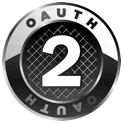
Single Sign-On (SSO)
Federation Across All Apps
AuthDigital’s secure, flexible and easy-to-use identity solution allows organizations to federate employee identity across cloud and web-based apps. With federated identity, employees can access all their apps through a single login (Single Sign-On).
Easy Integration with Cloud Apps
Today’s modern workforce expects to have access to the latest cloud apps across any device and time zone. App growth within the organization often outpaces available IT resources. This has led to the growth of Shadow IT, compromising security and compliance.
With AuthDigital, organizations can stop worrying about maintaining complex integrations with both federated and credential-based apps. AuthDigital’s comprehensive app catalog is continuously updated and maintained, enabling business and IT productivity while reducing Shadow IT in an organization.
Seamless and Secure Integration
As companies move to the cloud, it makes sense that they want to leverage their existing investments in identity infrastructure. With AuthDigital, organizations can seamlessly integrate with their existing directories be it Active Directory (AD), Google Apps, HR management systems or any directory using Lightweight Directory Access Protocol (LDAP) and extend user identity into the cloud. Companies can also use AuthDigital as their primary directory.
Secure Authentication with SAML
AuthDigital enables organizations to use industry-standard SAML (Security Assertion Markup Language) to connect with cloud apps. Using SAML eliminates the need for usernames and passwords, increasing security while freeing up IT resources and decreasing costs.
Multi-Factor Authentication (MFA)
With AuthDigital, organizations can use multi-factor authentication to prevent unauthorized logins and keep applications and information safe. Administrators can set granular policies, which require users to employ MFA when they sign into AuthDigital.
Efficient User Management
Organizations spend hours manually creating and updating user accounts for each new employee. AuthDigital automates user management, reducing the burden on administrators. Once new users are added to the organization’s primary directory, AuthDigital can auto-provision them to the downstream app. This provides faster provisioning of applications and users, increasing organizational productivity.
Federation & Single Sign-On
Credential Management
App Management
Directory Integration
Secure Access
The Best Solution For Your Business
MANAGED IdP
-
- Authentication
- User Provisioning
- Directory Integration
- Secure Access
- App Management
ON-PREMISE IdP
-
- Authentication
- User Provisioning
- Directory Integration
- Secure Access
- App Management
CUSTOM PLUGINS
SAML
-

- Authentication
- User Provisioning
- Directory Integration
- Secure Access
- App Management
OAUTH
-

- Authentication
- User Provisioning
- Directory Integration
- Secure Access
- App Management
OIDC
-

- Authentication
- User Provisioning
- Directory Integration
- Secure Access
- App Management
Social Login
-

- Authentication
- User Provisioning
- Directory Integration
- Secure Access
- App Management






